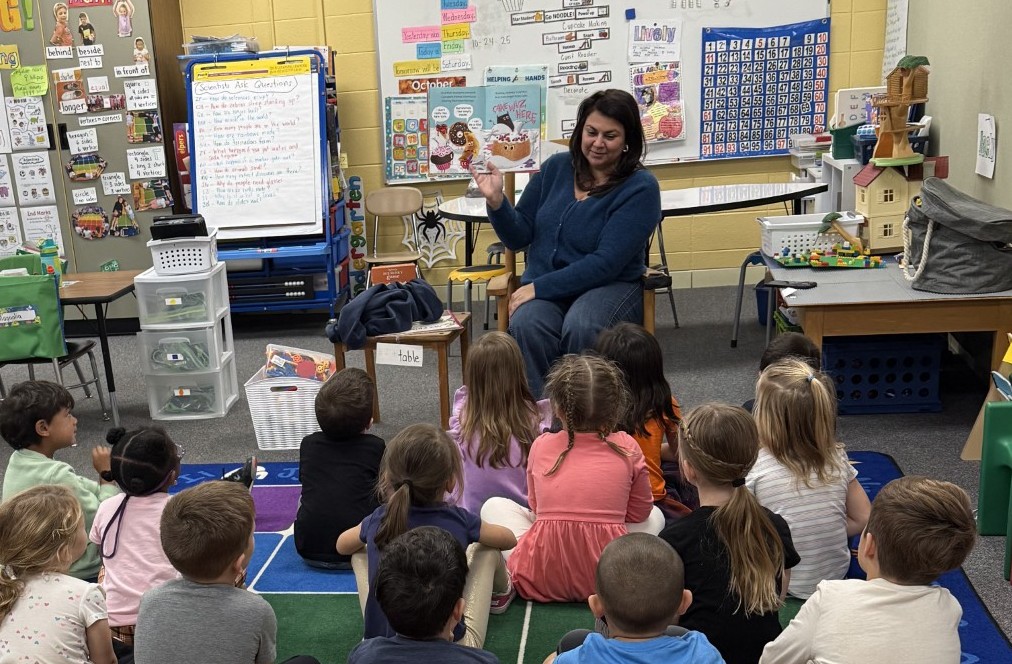EdExec Summit: 4 Tips to Plan for Successful AI Adoption
Amanda Bickerstaff discusses the urgency of AI adoption in education

Amanda Bickerstaff, CEO of AI for Education and founder of the Women in AI Education Community, says it’s critical to provide professional learning opportunities for AI, otherwise educators will have to do it on their own or risk using it in a way that is not meaningful or could even be dishonest. Districts also need to have responsible guidelines in place that feature promoting AI literacy.
“We think a literacy plan is very important, so at the EdExec Summit I'll be talking about what we've seen through our work with districts around the country—what's working and how to get started,” Bickerstaff says. “It's really important to give people strategies, but also ground those through lived experience.”
As noted, Bickerstaff will be speaking about AI at Tech & Learning’s upcoming EdExec Summit.
Bickerstaff shares her thoughts about the importance of representation as a tool to overcome gender disparities in AI use and the urgency to prepare for the future, sharing four tips to plan for successful AI adoption.
Women in AI Education

Bickerstaff founded the Women in AI Education Community in 2023 after realizing she was one of the few female voices getting attention in AI education. And it has grown rapidly.
“We are a community of 2,000 women across 23 time zones that are focused on AI and education,” Bickerstaff says. “We do virtual programming every month. We have a Slack channel that's really vibrant, where people create research together and share a lot of really amazing opportunities. The ultimate goal is that we want no gatekeeping. It’s very important for people to be able to easily find us.”
Conversation is a great way to build connections in the AI space.
Tools and ideas to transform education. Sign up below.
“There's no reason that it should be me, so I created a space for people to share,” Bickerstaff says. “People self-nominate to talk about the work they do in their communities. We had nearly 100 women share stories about how they were impacting AI and education in their own communities across the world.”
Bickerstaff says AI is making for a sea change in education that is going to require everyone working together.
“Responsible AI adoption is only going to work if it's a team effort,” she says. “It’s not going to require leaders and policymakers, but the people doing the work—students, families, communities. It's also going to happen very quickly. This is why the luminary education community or the work we do is so important.”
It is natural to see some sense of apprehension about unfamiliar tech and its ramifications.
“For many, it's easier to see the risks, especially in student use,” Bickerstaff says. “However, with AI literacy and responsible tooling everyone can use these tools better and more judiciously and better. Equipping people with AI literacy helps them figure out what the value is and what it can offer them. We really believe that AI literacy should be a much larger focus than it is.”
Representation Matters
An important reality is a gender disparity in AI usage.
“It appears to be around 20% difference between men and women professionals, even in education, adopting these tools,” says Bickerstaff. “It's absolutely important to continue to push adoption and professional development and opportunities. Representation is really important for young girls.”
Giving young women the opportunity to see themselves in AI professionals, and those professionals in a positive light, is another plus of the Women in AI Education Community.
“Generative AI is being blocked pretty significantly and has such a negative connotation in schools that part of the reason young women potentially could be avoiding it is because it could be seen as cheating,” Bickerstaff says. “Until the rhetoric changes in schools, you’re probably going to continue to see gaps in who is using the tools and think it helps when used the right way versus something that's just completely negative, top to bottom.
“There's research that shows that part of the reason why women are not using these tools in the workforce is for similar reasons. They don't want to seem like they are taking shortcuts or cheating—not putting the work in. It’s something to consider, how the rhetoric itself can pretty significantly impact adoption across gender. It is really important to acknowledge that.”
The Time for AI Adoption is Now
AI is not some passing phase or far off concept, the future is now.
“AI literacy is already being prioritized by hiring managers,” says Bickerstaff. “Cengage research from last year found the number one rising skill on job applications or LinkedIn postings is AI literacy. This is where it gets meaningful for students. This is something they are going to be expected not only to understand, but apply in their own practice and professional aspirations.”
Blocking students from using AI is not practical, says Bickerstaff, especially when colleges are requiring AI use and students are already using it. “This idea that we can hold them off and come back later with a plan is something we need to move past,” she says. “Like it or not, AI literacy for young people needs to start today.”
Some districts and organizations are fully onboard, which offers great lessons from which to learn.
“Chicago does significant work with teacher professional development,” says Bickerstaff. “In Houston, there's a student AI literacy course in the high schools, which is a great application of building AI literacy. We co-wrote the guidebooks with them. We partnered with Catawba County in their three-year grant with a goal of AI literacy for all teachers and students. There are smaller districts doing great work bringing in AI committees and creating spaces for collaboration, considering the impact of these tools and student AI literacy.”
While there is real movement in the space, it's still early.
“There's not a school system in the world that is not scrambling to figure out AI adoption in terms of student academic integrity and how to support teachers,” says Bickerstaff. “We’ve worked with hundreds of partners from the largest school districts to the smallest K12. We have a lot of practical and accessible free resources. This is an opportunity to do some deep learning with people like me who have a lot of experience in the space and can bring out those best use cases and practice and strategies to help.”
4 Tips to Plan for Successful AI Adoption
Bickerstaff shares how schools can successfully implement AI.
1. Create a set of responsible guidelines
These should be aligned with the mission and vision of the school system. It should have built-in guardrails, but also spaces in which people feel comfortable asking questions and trying things out to begin to identify how this could meaningfully change education.
2. Create an AI literacy plan
AI literacy work should be planned across all stakeholders within a district—not just educators or leaders, but students and the community.
3. Create an AI committee
If you don't already have an AI committee, pull together a group of people that includes not just early adopters or enthusiastic AI fans. Choose members across different departments with different experiences and backgrounds. Building their capacity and having them take the lead on some of these initiatives is a great way to get started.
4. Focus on building foundational AI literacy
Provide educators and students strong training on AI tools. “We have a free course with a certificate on our website,” says Bickerstaff. “A lot of good, free resources are out there, but also partner with experts when necessary to get people in a headspace where they can listen and ask questions.”
Sascha has nearly two decades of experience as a freelance journalist writing for national magazines, including The Washington Post, LA Times, Christian Science Monitor, National Geographic Traveler, and others. She writes about education, travel and culinary topics.

